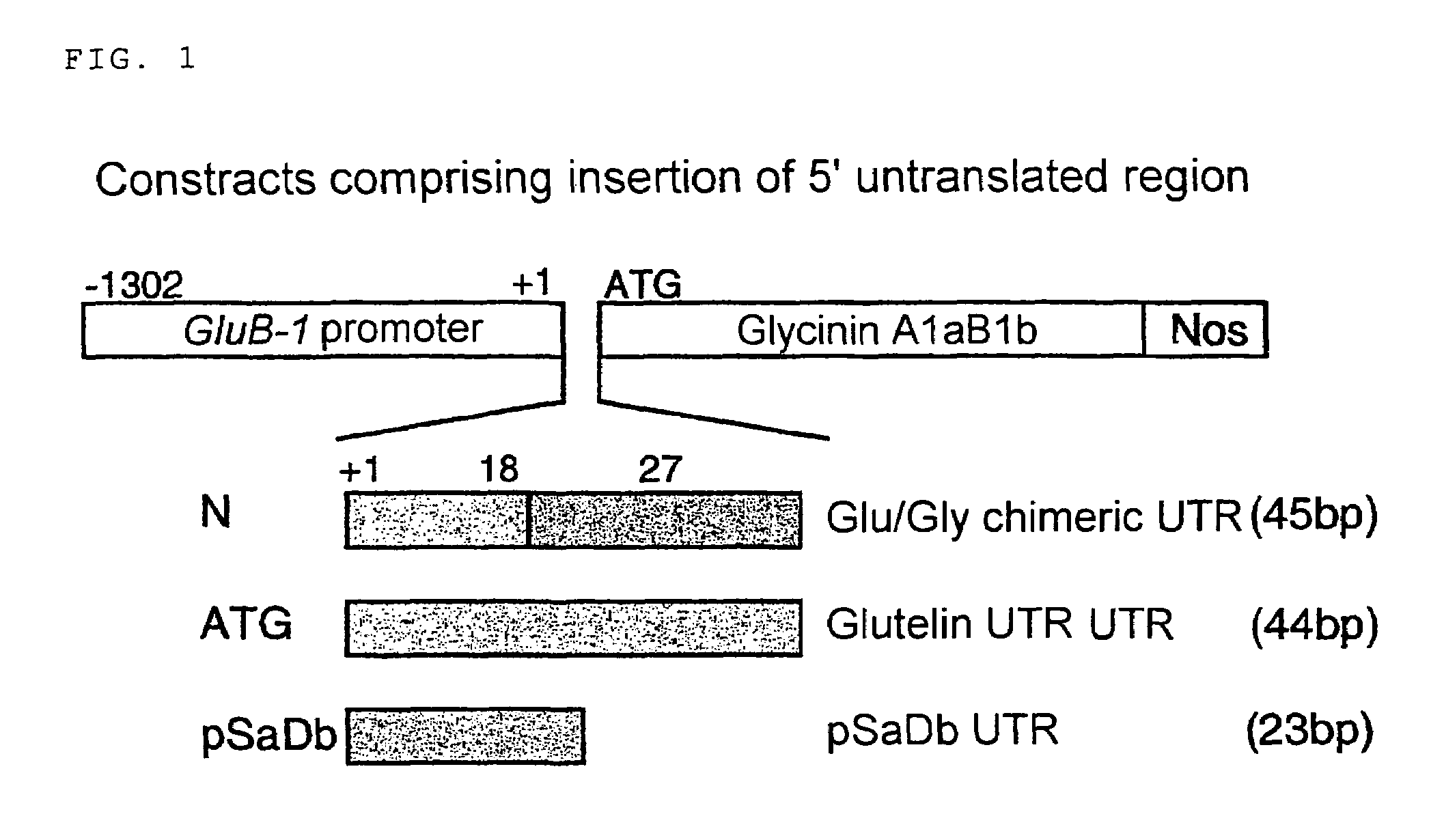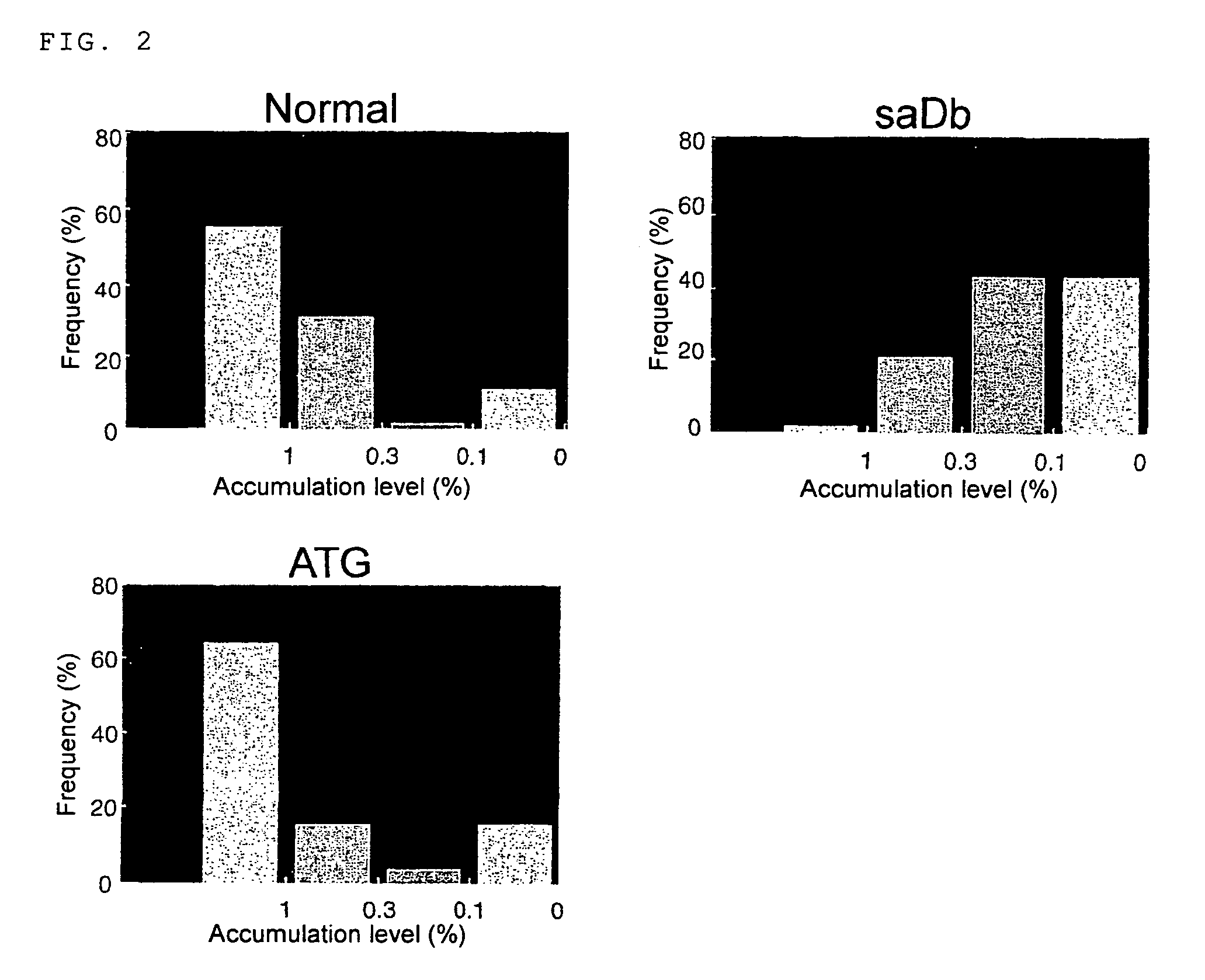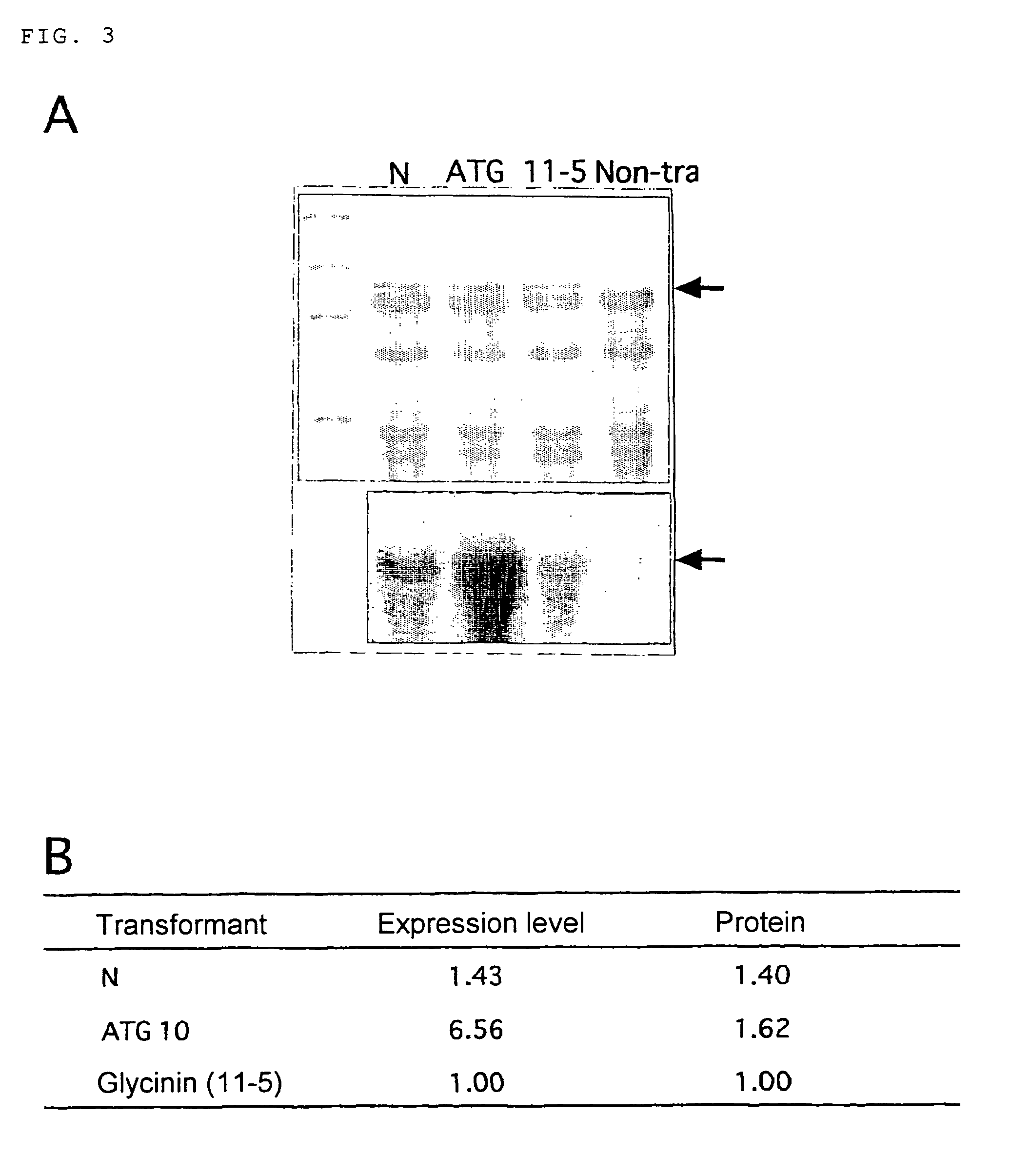Method of accumulating foreign gene product in plant seed at high level
a technology of foreign gene product and high level, which is applied in the preparation of hybrid cells, plant cells, biochemistry apparatus and processes, etc., can solve the problems of increasing the accumulation levels of both mrna and protein, and achieves the effect of accumulating higher expression levels, and high levels of foreign gene product in plant seeds
- Summary
- Abstract
- Description
- Claims
- Application Information
AI Technical Summary
Benefits of technology
Problems solved by technology
Method used
Image
Examples
example 1
Construction of Soybean Glycinin Expression Vector Using an Improved Promoter, and Generation of Rice Plant Expressing Soybean Glycinin
[0058](1) Construction of Chimeric Gene and Gene Transfer
[0059]A cDNA encoding glycinin (A1aB1b) was ligated to GluB-1 gene promoter. Between the cDNA and the promoter, a chimeric sequence (45 bp) of the untranslated regions of glutelin (+1 to 18) and glycinin (−27 to ATG) was inserted for N, and the complete 5′-untranslated region (44 bp) of GluB-1 gene for ATG (FIG. 1). As a control, an expression vector inserted with the 5′-untranslated region of pSaDb, translation enhancer sequence of a tobacco photosynthesis gene, was constructed. These plasmids comprising these chimeric genes were introduced. into rice (Oryza sativa cv Kitaake) using the Agrobacterium method (Goto, F. et al., Nat. Biotechnol. 17: 282-286 (1999)).
[0060]11-5 was selected from rice (Oryza sativa cv Matsuyama-mii) to which a chimeric gene wherein a cDNA encoding glycinin (A1aB1b) w...
example 2
Development of a Technique for Accumulating Foreign Gene Product at a High Level Using Mutants
[0065]11-5 (Momma, K. et al., Biosci. Biotechnol. Biochem. 63: 314-318 (1999)) was crossed with either LGC-1 (Iida, S. et al., Theor. Appl. Genet. 87: 374-378 (1993)) or α123 (Iida, S. et al., Theor. Appl. Genet. 94: 177-183 (1997)), and their F1 seeds were collected. The seeds were cracked in two (the seed bisection method), and endosperm was used for protein extraction and analysis by SDS-PAGE. Based on the result of SDS-PAGE analysis, seeds showing an intense band corresponding to glycinin and a weak band for the acidic subunit of glutelin were selected. By repeating such selection, plants that are homogenous in all phenotypes were obtained.
[0066]The endosperm protein in LGCx11-5 and α123x11-5 were analyzed by SDS-PAGE (FIG. 4). As a result, LGCx11-5 showed the phenotype of LGC-1 wherein the band for all 37 to 39 kDa acidic subunits of glutelin became weak (the total amount of glutelin w...
PUM
| Property | Measurement | Unit |
|---|---|---|
| temperature | aaaaa | aaaaa |
| solubility | aaaaa | aaaaa |
| Northern blot | aaaaa | aaaaa |
Abstract
Description
Claims
Application Information
 Login to View More
Login to View More - R&D
- Intellectual Property
- Life Sciences
- Materials
- Tech Scout
- Unparalleled Data Quality
- Higher Quality Content
- 60% Fewer Hallucinations
Browse by: Latest US Patents, China's latest patents, Technical Efficacy Thesaurus, Application Domain, Technology Topic, Popular Technical Reports.
© 2025 PatSnap. All rights reserved.Legal|Privacy policy|Modern Slavery Act Transparency Statement|Sitemap|About US| Contact US: help@patsnap.com



